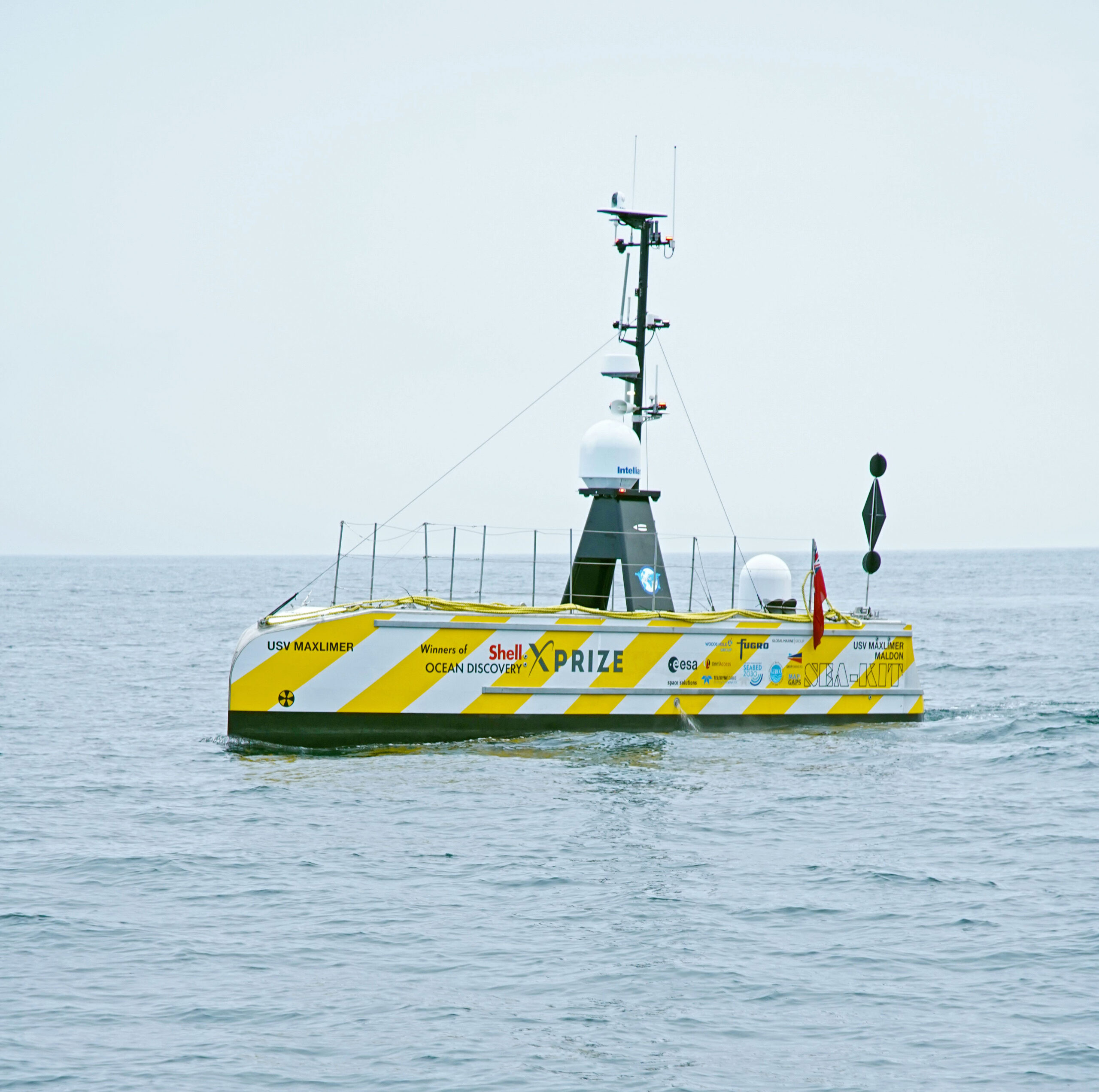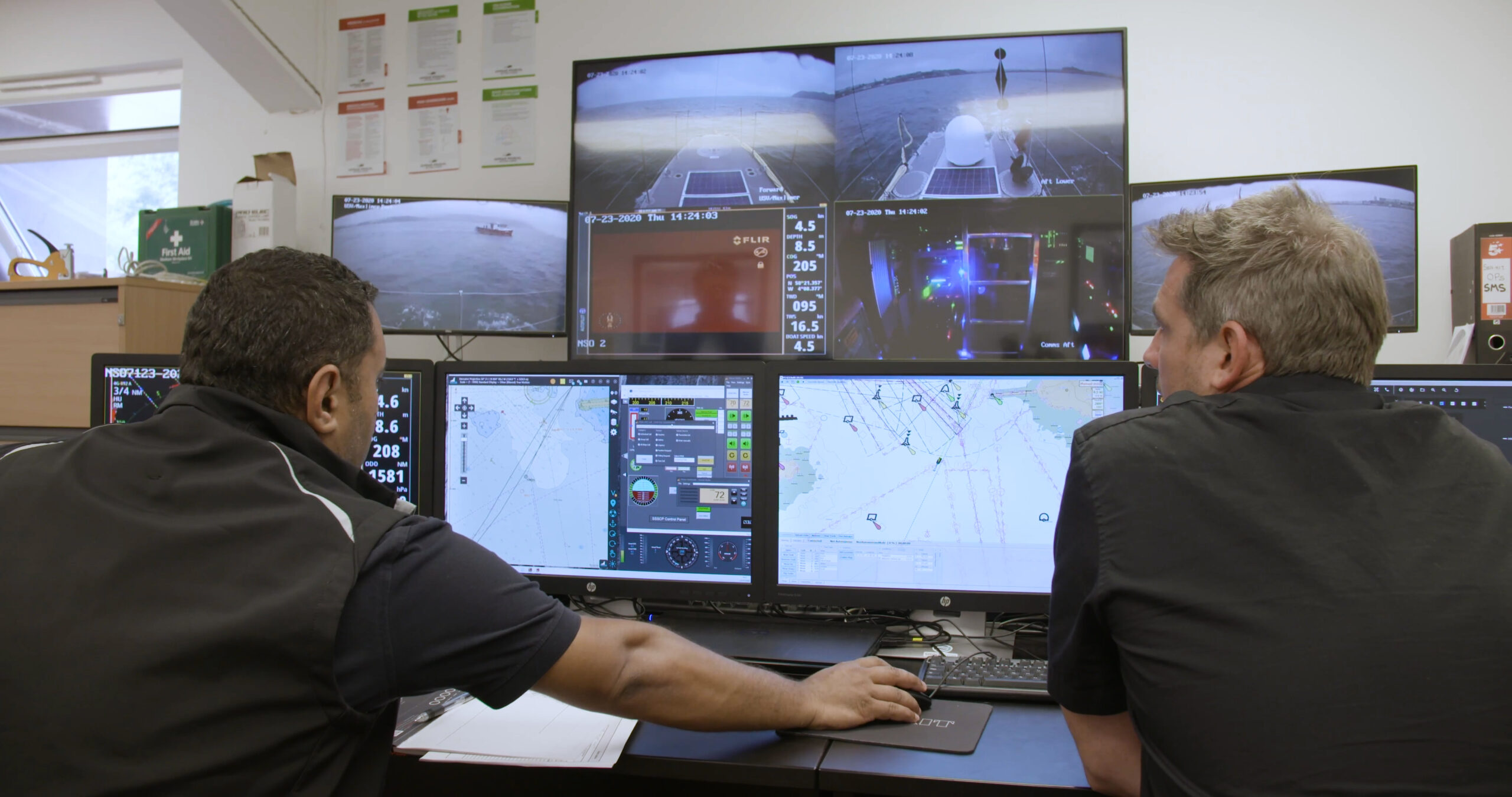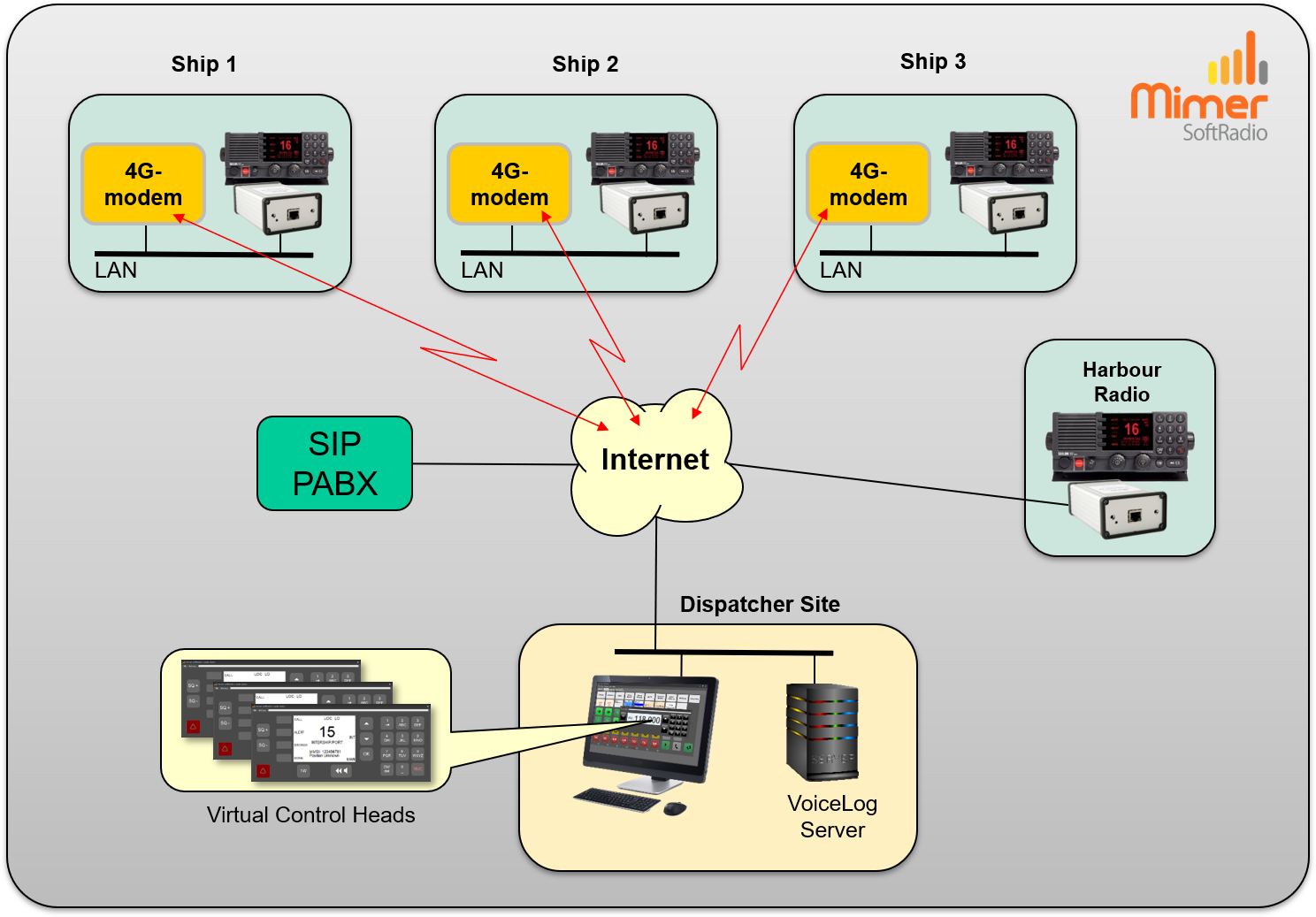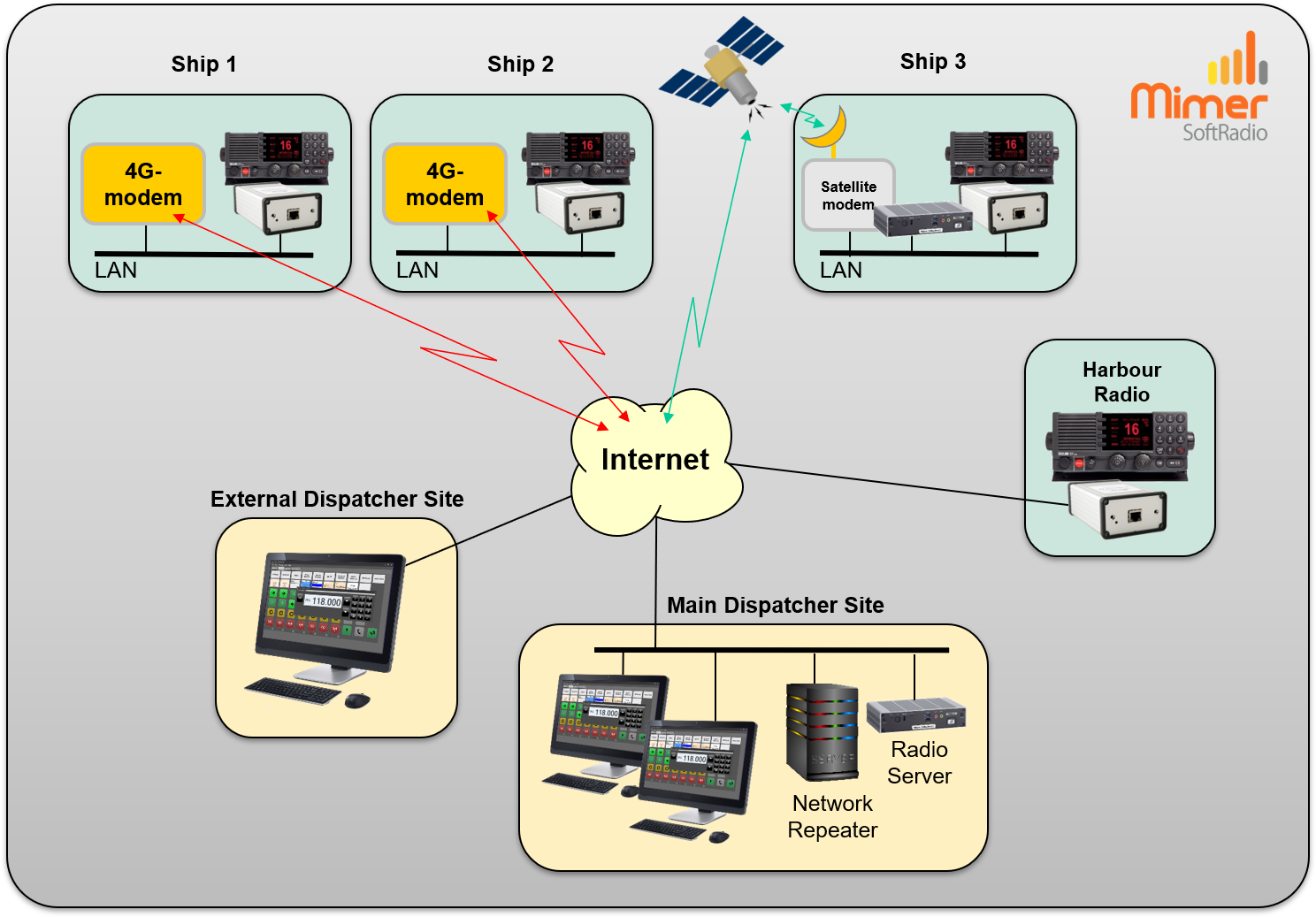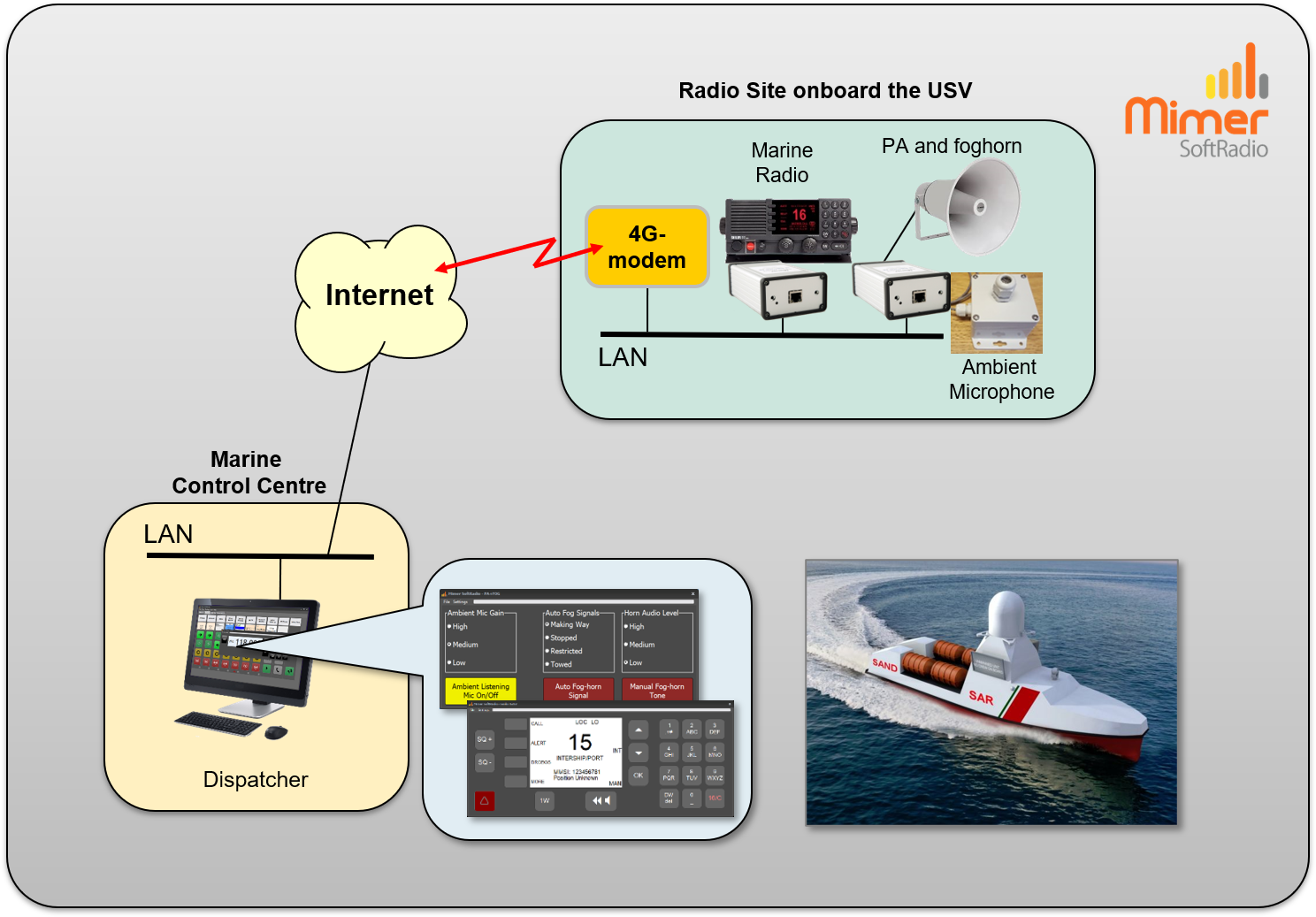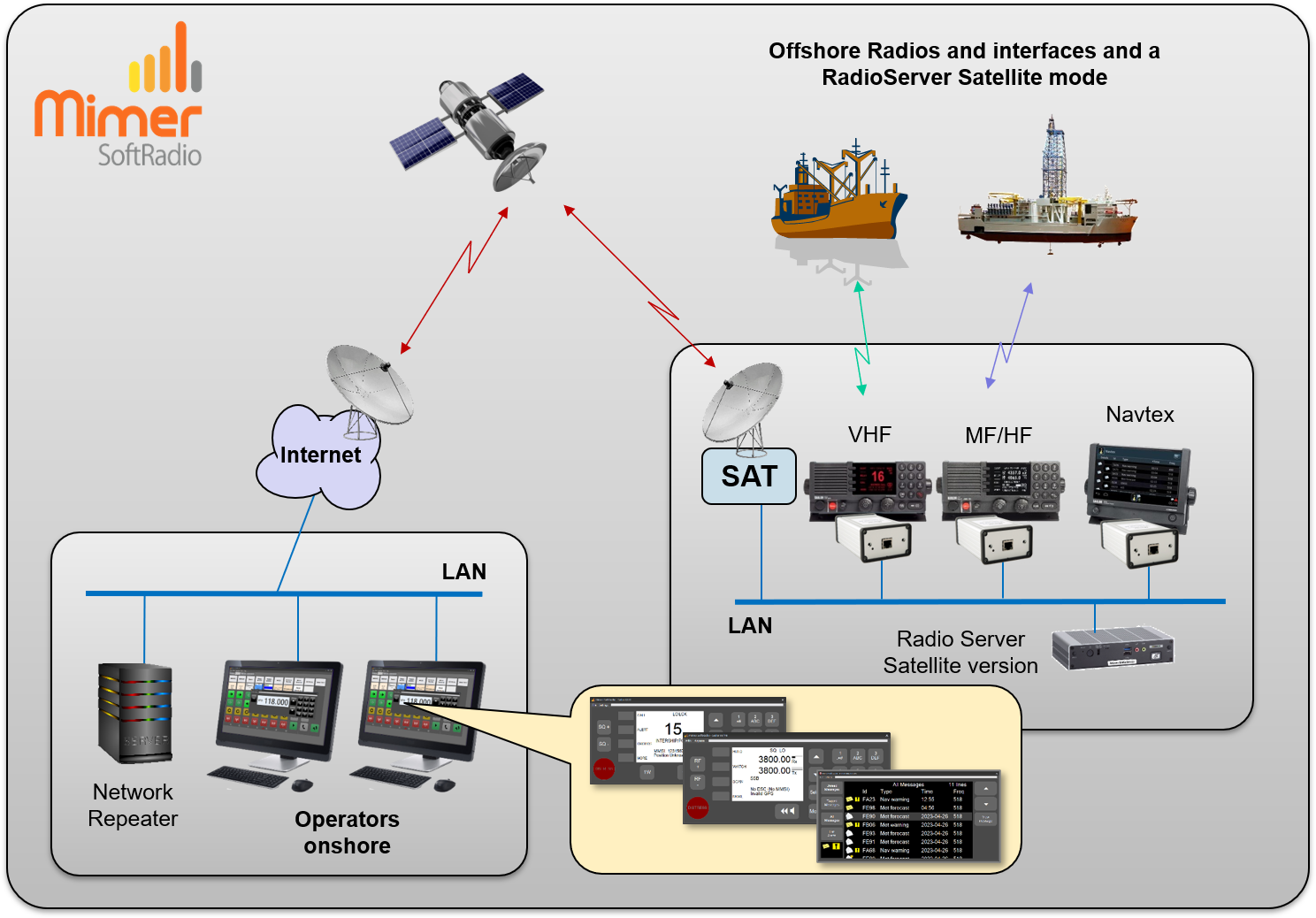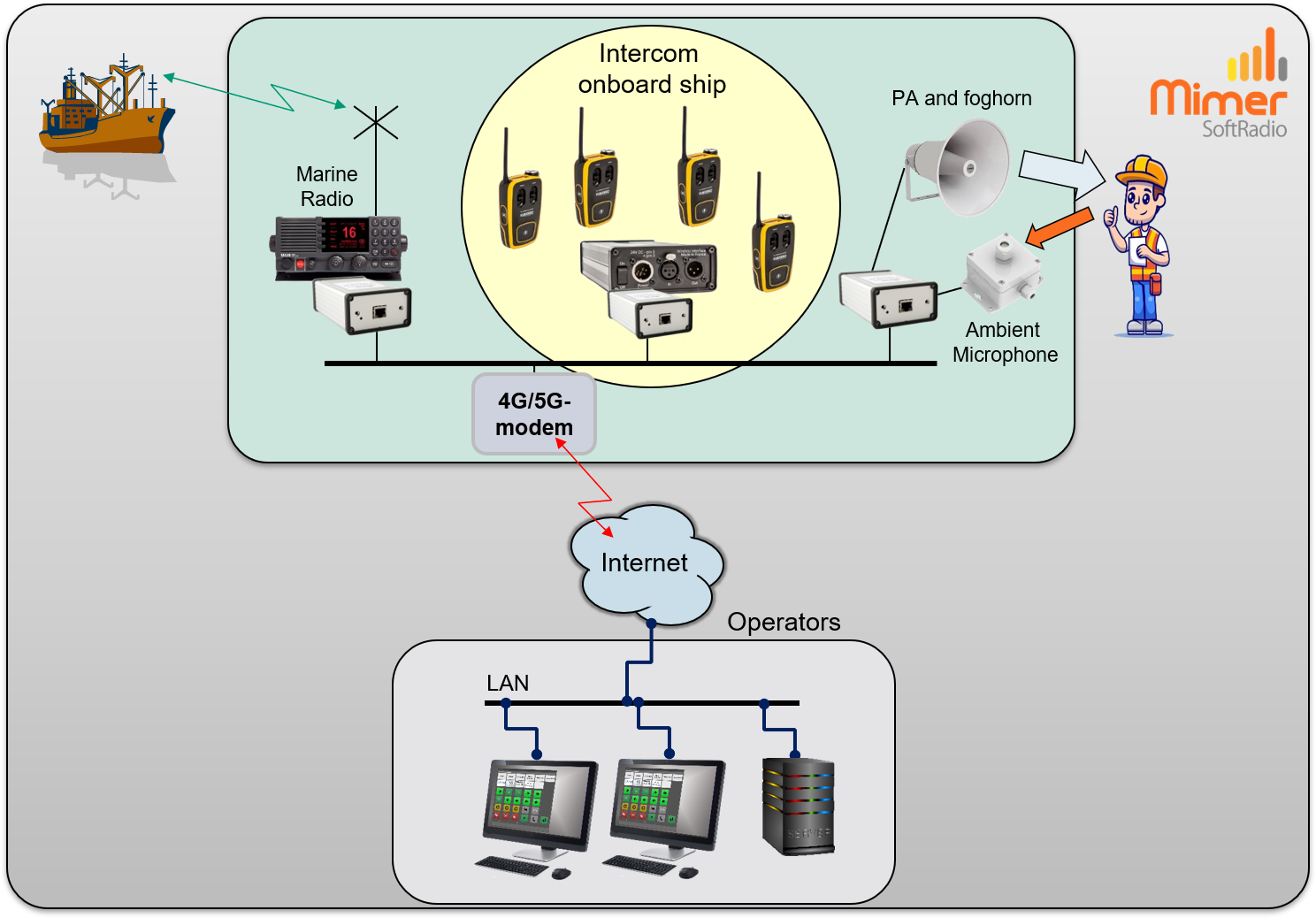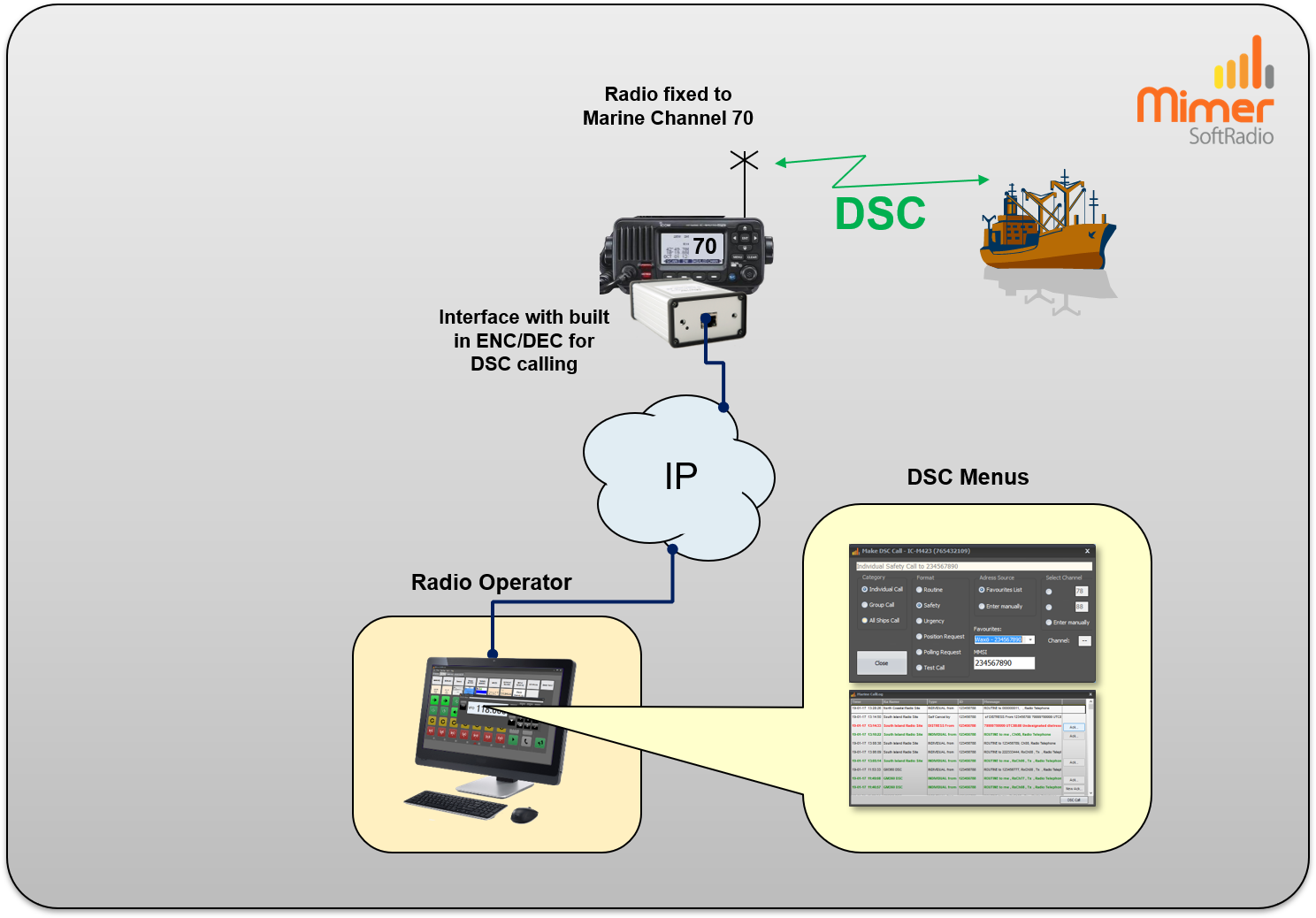USV - Unmanned Vessels
At the moment a lot of research is directed at building and launching Unmanned Surface Vehicles (USV’s) at sea. The object is to have them sail without personnel over both sea, on inland water ways and in lakes and harbours.
Even if the ship is unmanned, it needs to have a Marine Radio onboard, and this needs to be remote controlled from onshore. This is were SoftRadio comes into the picture.
Please also see the other pages with marine examples.
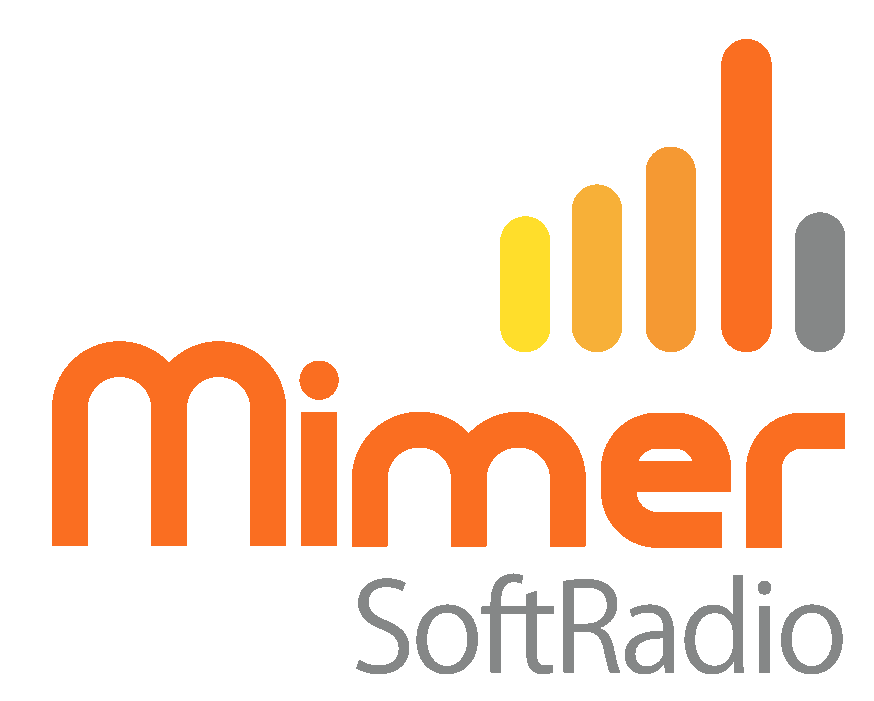
User video
One of our customers have made a video about how they remote control ships on the inland water ways in Belgium from their control centre in Antwerpen.
They use SoftRadio for remote control of onboard marine VHF radios, as you can see on the video.
Watch it on Youtube.
Remote control of onboard radios
For safety reasons the vessel needs to have a Marine radio onboard that a dispatcher at a marine control centre on shore can remote control and thereby talk over radio with other ships that are close by, just as if he would be onboard.
To make this work the vessel needs to have some type of IP link. Either through 4G/5G when close to shore or through satellite, when further out to sea.
The onboard radio is connected to a network interface and via the IP link to the dispatchers PC.
The radios will most often be of a Marine VHF type, but can also be other types of radios. Signalling like DSC and ATIS can be used.
DSC and ATIS are further described on the Marine Calls page.
Satellite communication on the RadioServer page.
Serving several vessels at the same time
Through SoftRadio one operator can handle several radios on different ships at the same time.
In the same operator software he can also handle for example other radios for use in ports and phone calls.
Several operators can work with the same ships in parallel, although they are located at different sites, even on different continents.
With a Mimer VoiceLog in the system, all calls can be recorded.
Working from several dispatch sites
Through SoftRadio many operators can handle many radios on different ships at the same time.
The radios both on board ships and elsewhere can be connected over different types of IP connections. You can mix the setup as needed. In the example two ships are using 4G connection, one ship is using satellite IP and the land based radio is connected over a fixed IP line.
Also the operators can be at different sites and be connected in different ways.
This opens up for having remote control centres on different sides of the world, in different time zones. So that the remote handling of the ship can be done from where it is best at the moment.
Remote control of other onboard equipment
PA, Foghorn and Ambient listening
Also other types of remote control can be made through the SoftRadio system. As an example we have built a special interface that is connected to an external horn speaker on the ship. This can be used so that the operator can use the horn speaker for PA announcements, for a horn signal or as a fog horn with preprogrammed repeating fog signals.
The PA and FogHorn interface also has connection for a microphone, for ambient listening. Through this the operator can monitor what is going on around the ship.
The audio path from the ambient microphone can be closed in order to save data over a satellite link.
Read more here.
HF/MF Radio
Some vessels also needs to have an HF/MF radio onboard and ofcourse also have it remote controlled together with the other onboard radio equipment.
This is now possible using the Sailor 6300-series of radios.
Read more here!
Navtex receiver
Just as with the HF/MF radio some vessels also needs to have a Navtex receiver onboard, and this also needs to be remote controlled from the MCC.
This is now possible using the Sailor 6391 – Navtex receiver.
Read more here!
Radio for intercom
If you from time to time have personnel onboard, you need to communicate with them from the onshore control. For this purpose you can install an extra remote controlled radio onboard, working on for example a UHF channel or a full duplex Vokkero system. And then give the onboard personnel hand portables on this system. The onshore helmsman can then talk to the onboard personnel and the onboard personnel can talk to each other.
Other interfaces with I/O ports can also be connected to the system, for miscellaneus use onboard.
Helpful SoftRadio Options
- DSC & ATIS
For calling other ships and also to get calls from other ships and coastal stations.
Read more here.
- PA and FogHorn
A special interface can be installed offshore that the operator can remote control. This will give a PA speaker, fog horn signalling and a ambient listening microphone.
Read more here.
- Phone connection
The operator can handle phone calls from the same software as the radio calls.
Read more here.
- Satellite mode
There are special versions of our servers to handle the latency and jitter over a satellite link.
Read more here.
- Low Bandwidth
We have an option to the Network Interface that reduces the bandwidth needed. Practical when every byte costs, for example over satellite.
Read more here.

